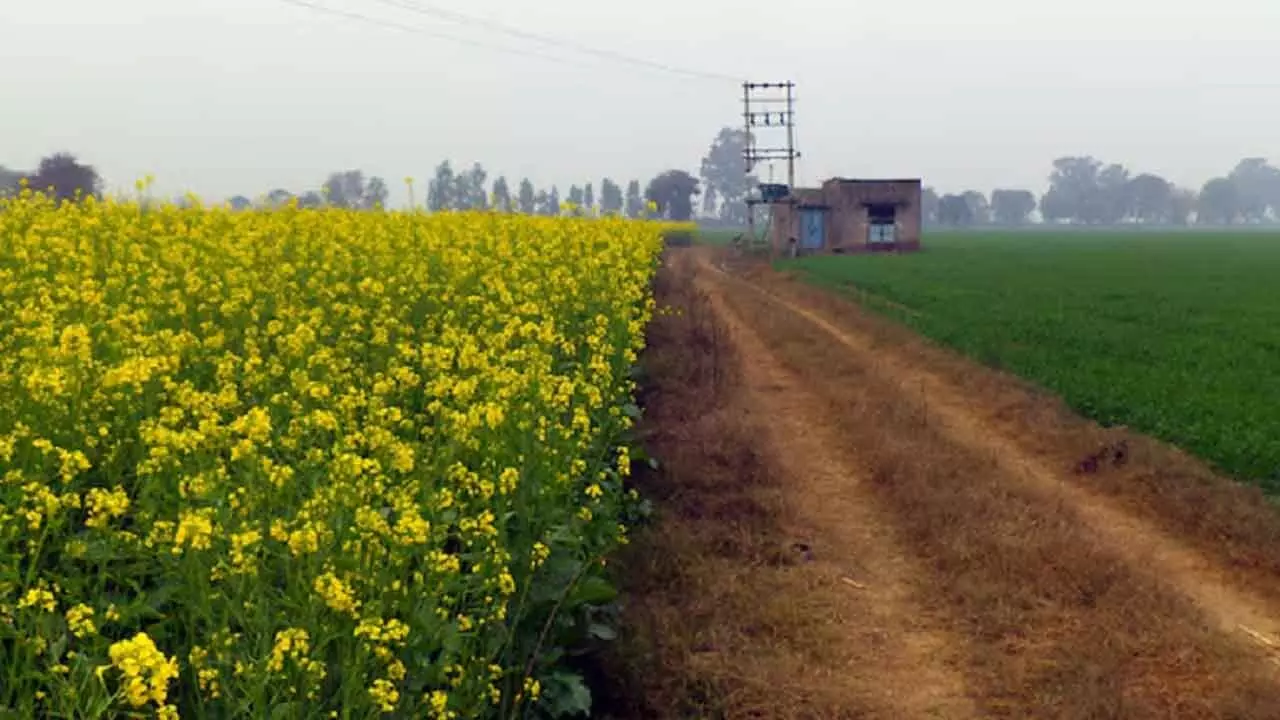Dhan-Dhaanya Krishi Yojana To Cover 100 Dists
Global practices and domestic best practices to be incorporated and appropriate tech and fin assistance will be sought from development banks
Dhan-Dhaanya Krishi Yojana To Cover 100 Dists

It will enhance agricultural productivity, adopt crop diversification and sustainable agriculture practices, augment post-harvest storage at the panchayat and block level, improve irrigation facilities and facilitate availability of long-term and short-term credit
Kolkata: In her eighth straight Union Budget in a row, the Union Finance minister Nirmala focused on 10 broad areas, the first engine of which is the Agriculture sector.
Sitharaman said that the Prime Minister Dhan-Dhaanya Krishi Yojana will cover 100 districts with low productivity. It will enhance agricultural productivity, adopt crop diversification and sustainable agriculture practices, augment post-harvest storage at the panchayat and block level, improve irrigation facilities and facilitate availability of long-term and short-term credit. The scheme would cover as many as 1.7 crore farmers. The programme, which will be launched with the states, will aim to grow ample opportunities for the farmers, she said.
That’s not all. The Union Finance Minister left no stone unturned to involve global practice in Indian agriculture. Sitharaman said that global practices and domestic best practices will be incorporated and appropriate technical and financial assistance will be sought from multilateral development banks.
A comprehensive multi-sectoral 'Rural Prosperity and Resilience' programme will also be launched in partnership with states. The programme will focus on rural women, young farmers, rural youth, marginal and small farmers, and landless families. The finance minister said that the goal is to generate ample opportunities in rural areas so that "migration is an option, but not a necessity".
“Agriculture is one of the key focus areas of the present government. The Union Finance Minister has taken some strong initiatives. She has aptly termed agriculture as the prime engine of growth,” said Sunil Goenka, Chief Mentor, Nova Realtime Solutions LLP. He said that the move to implement the National Mission for edible oilseed for achieving self sufficiency (aatmanirbharta) in edible oils, the announcement to launch a 6-year programme in ‘Mission for Atmanirbharta in pulses', with focus on urad, toor and masoor, are also welcome moves. Besides, Sitharaman said that as the consumption in fruits is also increasing with the rise in income levels, the remuneration for farmers will also increase in collaboration with states. Political opponents of the government may find some political twist to this, but the FM created a special opportunity in Bihar as she proposed to establish the Makhana board in that election-bound state, where there are often rumours over BJP’s political ally Nitish Kumar switching over camps. The proposed Makhana board will provide training and support to Makhana farmers, FM said.
The finance minister said that the Modi government will launch a ‘National Mission on high yielding seeds’. This will be aimed at strengthening the research ecosystem, targeted development and propagation of seeds with high yield, pest resistance and climate resilience, and commercial availability of more than 100 seed varieties released since July 2024. Given the fact that India ranks second in fish production and aqua culture, Sitharaman said that there will be a special focus programme to unlock the untapped the sector. The Modi government will also introduce a framework for sustainable harnessing of fisheries from Indian Exclusive Economic Zone and High Seas, with a special focus on the Andaman and Nicobar and Lakshadweep Islands.
Sitharaman also proposed a five-year mission for cotton varieties, through which the best of science support will be provided to farmers to ensure a steady supply of cotton used in textile sector.
"The government's five-year mission to enhance cotton productivity with high-quality, long-staple varieties is a game-changer for India’s textile industry. As the world’s second-largest cotton producer, India’s textile and apparel exports stood at $35.87 billion in FY24, accounting for 8 per cent of total merchandise exports," said Naveen Malpani, Partner and Consumer Industry, Grant Thornton Bharat.
"However, India continues to import cotton to bridge the demand-supply gap, affecting cost competitiveness. By boosting domestic productivity, this initiative will stabilize raw material availability, reduce import dependence, and enhance the global competitiveness of India’s textile sector, where 80 per cent of capacity is driven by MSMEs. With textiles contributing 2.3 per cent to GDP and employing over 45 million people, this mission aligns with India’s broader strategy to strengthen manufacturing and exports. Successful implementation will reinforce India’s position as a key global supplier while supporting the transition to high-value cotton-based products," said Malpani.
In her Budget 2005 speech, Nirmala Sitharaman also said that the loan limit under the modified scheme for farmers will be increased from Rs 3 lakh to Rs 5 lakh. This will fall under the loans taken through the Kisan Credit Cards (KCC).
Besides, Sitharaman said that the government had reopened three dormant urea plants in the Eastern region for atmanirbharta in urea production. "To further augment urea supply, a plant with annual capacity of 12.7 lakh metric tonne will be set up at Namrup, Assam.
“I can see the right focus on the agriculture sector, especially on enhancing productivity, engendering agriculture through women focus, competitive import substitution in pulses and oil seeds through phased MSP support for 4 years and in urea through establishing a 7 lakh MT urea processing plant in Assam,” said Goenka.

